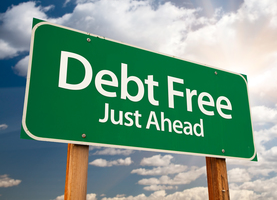by Hope
I just reviewed my forecast for the month. Thought you might want to see my planned spending and known income:
| Payee | Amount |
| Mortgage – part I | -$599 |
| Health Insurance | -$76 |
| Income | $684 |
| Amazon CC | -$96 |
| Gas/Water/Trash | -$150? |
| TX Savings | -$20 |
| TX Stash | -$20 |
| Income | -$20 |
| Electrician | -$1,210 |
| Sam’s Club CC | -$33 |
| Electricity | -$43 |
| Upwork | $500 |
| TX Savings | -$20 |
| TX Stash | -$20 |
| Verizon | -$350 |
| Auto Insurance | -$737 |
| Mortgage – part 2 | -$500 |
| Income | |
| TX Savings | -$20 |
| TX Stash | -$20 |
| USAA CC | -$181 |
| Beauty – phone | $71 |
| Gymnast – phone | $75 |
| Frontier CC | -$157 |
| Princess – phone & internet | $114 |
| Income | |
| TX Savings | -$20 |
| TX Stash | -$20 |
| Storage | -$79 |
| Internet | -$63 |
| Apple CC | -$ |
| Total | -$3,010 |
If the amount is blank, it means I don’t know it.
Some notes:
The total looks scary with just two weeks of income left to be calculated. However, my mortgage (part 1), the electrician, and health insurance are already covered from last month’s income.
There is no budget for gas or groceries this month. That is intentional as I am moving completely out of the house at the end of the month, so I want to eat through everything here. And I have no plans to leave a 3 mile radius of my home so my current full tank of gas should last me easily. I believe I have enough food to last me even if I am down to peanut butter sandwiches by the end of the month. (My loaf bread is kept frozen now and just toast it as needed so it doesn’t go bad.)
I do have additional income, but it is not predictable as far as amount or when I will get paid. It also goes into my business account. I have several business related bills that are covered from that account. The current balance of that account is right at $250 so it’s got enough to cover this month’s bills and some. When business is good, I would typically set up my Verizon and Internet bills to be paid from my business account. (Note: Upwork income, as seen here, requires that it be paid to a personal checking account so I cannot set it up to go to my business account.)
The TX Stash and TX Saving line items are weekly transfers to my ROTH account and my savings account. It’s not a lot but it’s something.
Things are tight. But nothing is late, nothing is over drafted.

Hope is a resourceful and solutions-driven business manager who has spent nearly two decades helping clients streamline their operations and grow their businesses through project management, digital marketing, and tech expertise. Recently transitioning from her role as a single mom of five foster/adoptive children to an empty nester, Hope is navigating the emotional and practical challenges of redefining her life while maintaining her determination to regain financial control and eliminate debt.
Living in a cozy small town in northeast Georgia with her three dogs, Hope cherishes the serenity of the mountains over the bustle of the beach. Though her kids are now finding their footing in the world—pursuing education, careers, and independence—she remains deeply committed to supporting them in this next chapter, even as she faces the bittersweet tug of letting go.
Since joining the Blogging Away Debt community in 2015, Hope has candidly shared her journey of financial ups and downs. Now, with a renewed focus and a clear path ahead, she’s ready to tackle her finances with the same passion and perseverance that she’s brought to her life and career. Through her writing, she continues to inspire others to confront their own financial challenges and strive for a brighter future.

